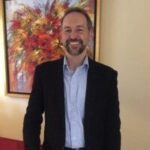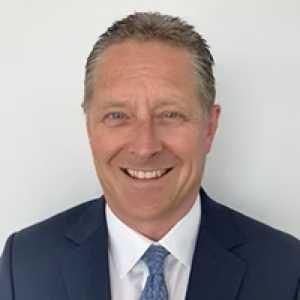
Bernd Geels
Forensic odontology is a profession that stands at the intersection of dentistry and law. While general dentistry focuses on the oral and dental health of the general population, forensic odontology is a specialization focused on a particular population.
Forensic odontology focuses on examining, handling, and presenting dental evidence for use by the legal system and interrelated parties such as law enforcement. During their training, forensic odontologists may also learn from forensic medicine, law, and research. Forensic dentists are frequently called forensic odontologists. The two terms may be seen as interchangeable. For the sake of simplicity, the terms odontology and odontologist will generally be used throughout this document to refer, respectively, to the discipline of forensic dentistry and those who practice it.
Forensic odontology is the study of teeth and the mouth as it applies to both civil and criminal law. Forensic odontologists may aid investigators in identifying both victims and perpetrators of crimes. The art of identifying such individuals via teeth and mouth is a critical discipline as the damage or virtually complete destruction of human bodies can, in many cases, make positively identifying individuals very difficult, if not impossible. Forensic odontology relies on a scientific methodology to study dental anatomy and the interpretation of radiographs, pathology, dental materials, and developmental abnormalities.
Forensic odontology is also helpful in the identification of victims of disasters. Disasters in which a forensic dentist’s expertise may be sought include fires, earthquakes, hurricanes, airplane crashes, and terrorist activities. For example, forensic odontologists have been critical to the successful identification of victims of the Oklahoma City Federal Building bombing (1995), the September 11th attacks (2001), and the most recent Palisades fires (2025). Once a human body has reached a certain stage of decomposition, the use of forensic odontology may become the primary or only way a person’s body can still be positively identified. Such identification is done primarily by comparing postmortem radiographs of the deceased with antemortem radiographs of the people who are believed to be victims. The use of forensic odontology may ultimately help families of missing and deceased loved ones find some measure of peace, closure, or justice.
Two major professional organizations serve the needs of the discipline of forensic odontology. These are the American Society of Forensic Odontology (ASFO) and the American Board of Forensic Odontology (ABFO).
The ASFO is one of the largest organizations that represents the interests of forensic odontology worldwide. A primary objective of ASFO is to advance the field of forensic odontology and to develop and maintain the highest standards of practice. The organization’s website offers a wealth of resources, including courses, research and grants, upcoming meetings, a newsletter, and a professional directory.
The ABFO is the professional association responsible for certifying specialists who fulfill the requirements to practice as forensic odontologists. ABFO was originally organized in 1976 under the auspices of the National Institute of Justice. The Board identifies as its objective the creation, enhancement, and revision of standards and qualifications for those who practice forensic odontology, and also the certification of qualified specialists who fulfill the requirements of the Board to practice in the field of forensic odontology. ABFO exists within the American Academy of Forensic Science (AAFS).
Read on to discover the career outlook, salary, responsibilities, and training for forensic odontology.

Dr. Dirk van der Meer is president-elect of the American Society of Forensic Odontology (ASFO). With more than 30 years of clinical dentistry experience, he is a board-certified forensic odontologist and a Diplomate of the American Board of Forensic Odontology (ABFO).
Dr. van der Meer earned his bachelor of science in biochemistry and DMD from the University of British Columbia. He later completed a fellowship in forensic odontology at the University of Texas Health Science Center in San Antonio and a Master of Science in Forensic Science from the University of Florida.
Dr. van der Meer is the chief forensic odontologist for the Province of British Columbia and is also the founding president of the Forensic Odontology Response Team BC Society (FORT BC Society). Internationally, he represents Canada on INTERPOL’s Disaster Victim Identification (DVI) Forensic Odontology Sub-Working Group, which convenes in Lyon and Singapore. He is actively involved as a course coordinator and instructor for forensic odontology disaster victim identification training courses for Canadian and international identification specialists.
ForensicsColleges.com: What’s something you wish the general public knew about forensic odontology?
Dr. van der Meer: Forensic odontology is the aspect of dentistry that overlaps with the law and can assist legal casework in a variety of manners, including identification of human remains, age estimation, and bitemark analysis.
Teeth contain distinct features (including both variations in natural anatomy and dental restorations such as crowns and fillings), and forensic odontology methods can be used to identify victims of accidents, natural disasters, or homicide. Since teeth are the most durable structures of the human body and are able to withstand extreme conditions such as heat, water, and trauma, forensic odontology has been a very important victim identification method in many world events, such as the 2004 Asian tsunami and the 2023 Maui wildfires.
Also, since teeth develop at a relatively predictable rate up until development is completed in a person’s mid-twenties, teeth can be one of the most reliable methods of estimating someone’s age. Teeth can produce distinct patterns in bitemark injuries. The analysis of these injuries by a forensic odontologist can assist investigators in criminal and abuse cases.
ForensicsColleges.com: Do you have any advice for those interested in this area as a career?
Dr. van der Meer: Forensic odontology is a fascinating and challenging field of forensic science, and requires many years of dedication and study to become an expert. Most forensic odontologists are dentists who work in private practice doing clinical dentistry and generally are involved in forensic casework on a part-time or as-needed basis. There are very few full-time forensic odontologist positions in the world.
For the student in high school or university, sciences are the foundation of dentistry and forensics. Learning about biology and chemistry are necessary when pursuing this field but understanding the scientific method—unbiased, objective methods of studying the world around us—becomes essential to a successful career. Additionally, taking courses in law, legal cases, human rights and related subjects provides an avenue to begin understanding the connection between science and the law.
Becoming a forensic dentist requires undergraduate studies in science, a degree in dentistry and then many courses in forensic odontology and other aspects of forensics. In addition, dental personnel such as dental hygienists and dental assistants can have valuable roles in forensic odontology. There are very few formal university programs that provide the full scope of training but there are many short courses, workshops, and forensic conferences that provide not just the opportunity to learn about forensic dentistry but also the opportunity to meet other forensic odontologists and establish professional networks.
With enough forensic training, a dentist or dental personnel can then begin involvement in forensic casework and gain essential experience. With sufficient training and experience, a dentist can be eligible to challenge the ABFO (American Board of Forensic Odontology) board exam to become a board-certified forensic odontologist, the highest level of certification in forensic odontology.
Becoming a forensic odontologist is a long journey of dedication fuelled by a true passion for forensics, science and learning. The journey never really ends – we always remain students in this ever-developing field.
ForensicsColleges.com: What does the future of forensic odontology look like to you?
Dr. van der Meer: The important aspects of teeth that make them valuable in forensics will never change: that teeth are the most durable structures in the human body and that teeth contain individual characteristics that can help solve forensic cases. What will change is science and technology. Further scientific studies in all aspects of forensic odontology will continue to evolve the field and provide more and more evidence-based approaches to casework.
Three-dimensional radiographic imaging techniques (such as CBCT: Cone Beam Computed Tomography) will continue to develop and provide increasingly improving visual details of teeth and other structures inside the human body.
Virtual autopsies—3D imaging of human remains—is a developing aspect of forensics that could eventually replace conventional postmortem imaging and analysis. Artificial intelligence is revolutionizing all aspects of society worldwide, and there is no doubt that AI applications in forensic dentistry will be incorporated in the field. For example, current studies are exploring the use of AI to assist forensic identification and age estimation using dental radiographs and 3D CBCT imaging. It is difficult to predict exactly what further changes the field will see, but change is inevitable.
The United States Bureau of Labor Statistics (BLS 2025) projects the overall employment of dentists to grow 5 percent between 2023 and 2033. This growth rate is approximately equal to the average for all occupations. About 7,300 openings are expected for each year of the aforementioned decade. Many openings will occur due to transfers to other occupations and retirement.
The forecast for growth of the general dentistry profession can serve as a fairly reasonable estimate for the expected growth in the specialization of forensic odontology because many odontologists trained in this specialization nonetheless also work as career dentists. In fact, forensic odontologists are often not in sufficient demand such that they can financially sustain themselves on the practice of their specialization alone. Even in some large metropolitan areas where the sheer volume of crime could keep a small number of forensic odontologists somewhat consistently employed, it does not make good financial sense to base a sustainable living on the practice of this specialization alone.
The salary a forensic odontologist can expect to earn depends on many factors. These factors include educational attainment, professional experience, and the local job market conditions. Additional factors influencing salary data include formal affiliation with a forensic agency and the availability of casework. Bonuses, special benefits, and profit sharing are uncommon in forensic odontology.
Given the relatively small number of practicing forensic odontologists in the United States, finding accurate and comprehensive salary data can be difficult. However, salary data for practicing dentists can be used as a good proxy to predict reasonable salary expectations for forensic odontologists.
According to the BLS (May 2024), dentists earned the following in the United States:
Aspiring forensic odontologists and professionals with closely related skills are encouraged to use tools such as the cost of living data series provided by the Missouri Economic Research and Information Center (MERIC 2025) when considering job offers. This site provides analysis useful to better understand just how much purchasing power a certain salary will have in different parts of the country.
Those seeking to become forensic odontologists will do well to show skill in physical and health sciences as well as anatomy as early as their high school education. Given how closely forensic odontologists may work with law enforcement and investigative bodies, a demonstrated early interest in law and criminology may also prove helpful later on.
Upon graduating from high school, a person seeking to become a forensic dentist must complete an undergraduate (bachelor’s degree) academic degree to be eligible to start dental school.
Highly skilled individuals may ultimately complete their undergraduate degree in less than four years, thereby somewhat shortening the total time commitment. Those interested in forensics, but as yet uncommitted to forensic odontology, may elect to complete an undergraduate degree in forensic science. Popular bachelor’s degrees for forensics professionals include degrees in chemistry, biology, and other natural sciences.
Admissions requirements for many undergraduate programs include official high school transcripts, a satisfactory test score (SAT or ACT, in addition to the TOEFL test for non-native speakers of English), a personal or motivational statement, and an application fee. Students already sure of their interest in forensics should seek out programs accredited by the Forensic Science Education Programs Accreditation Commission (FEPAC), the country’s predominant program approval body for forensics programs.
Becoming a dentist is a significant educational investment. A vast majority of dental schools require a bachelor’s degree to apply. With but one exception, all currently-accredited dental schools in the United States are four-year programs. Dental schools do not require applicants to have a specific bachelor’s degree major. In addition to a bachelor’s degree, applicants must also complete dental school requirements, including an adequate Dental Admissions Test (DAT) score, letters of recommendation, and a dental school personal statement. Upon completion of dental school, a graduate receives either a DDS or DMD. There is essentially no difference between these two designations.
After receiving formal recognition as a dentist, individuals must complete training specific to forensic odontology. Many forensic odontologists receive most of their training through courses, lectures, and other resources provided by forensic institutions and dental organizations. Forensic odontologists may also complete relevant training through basic courses in forensic science and medicolegal death investigation.
See the certification step below for details on this step.
The primary objective that informs the variety of tasks and duties a forensic odontologist customarily completes is the careful application of scientific and medical techniques, without bias, to locate and analyze dental and related oral materials. Common tasks include:
Completing such tasks requires a variety of skills. The skills necessary to complete the aforementioned tasks include:
With experience and training a dentist can be actively involved in forensic cases. As previously noted, the final stage in becoming a certified forensic odontologist is obtaining certification from the relevant professional certifying organization. In the case of forensic odontology, that organization is the American Board of Forensic Odontology (ABFO) within the American Academy of Forensic Science.
To become ABFO certified, a forensic odontologist must:
Once candidates fulfill the knowledge, experience, and other requirements, they can take the certification test. This test will examine candidate competencies in the following topics:

Bernd Geels
Bernd Geels is a Berlin, Germany-based freelance writer and artist. He holds an undergraduate degree in atmospheric science and two graduate degrees. He completed his most recent graduate degree in international environmental studies at the Monterey Institute of International Studies in 2011. He is interested in healthcare, climate change, marine conservation, indigenous science, and refugee issues. You can reach him directly at [email protected].

Matt Zbrog
Matt Zbrog is a writer and researcher from Southern California. Since 2018, he’s written extensively about the increasing digitization of investigations, the growing importance of forensic science, and emerging areas of investigative practice like open source intelligence (OSINT) and blockchain forensics. His writing and research are focused on learning from those who know the subject best, including leaders and subject matter specialists from the Association of Certified Fraud Examiners (ACFE) and the American Academy of Forensic Science (AAFS). As part of the Big Employers in Forensics series, Matt has conducted detailed interviews with forensic experts at the ATF, DEA, FBI, and NCIS.